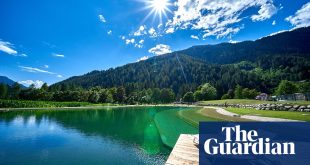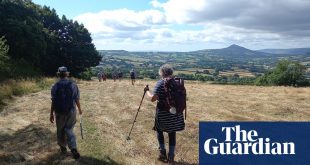Start The Riverside, Aymestrey
Distance 9 miles
Time 5 hours
Total ascent 475 metres
Difficulty Moderate
Route notes osmaps.ordnancesurvey.co.uk
Google map of the route
Allow Google content?
This article includes content provided by Google. We ask for your permission before anything is loaded, as they may be using cookies and other technologies. To view this content, click ‘Allow and continue’.
Times have taken a turn for the tranquil in Mortimer Country. Wind back a millennia and this northernmost corner of Herefordshire, where the county cosies up to Shropshire and Wales, was the realm of border battles, brawny castles and ruthless Marcher lords, dominated by the Mortimers, one of the most powerful Norman earldoms. But now it is green, serene and slumbersome, a place of quiet, black-and-white timbered hamlets and tree-frilled river valleys that flush variously with snowdrops, bluebells, ramsons and autumnal flames.
The 30-mile Mortimer Trail cuts a diagonal dash across this old frontierland, linking Ludlow (main seat of the Mortimers from the early 14th century) and Kington, to the south-west on Offa’s Dyke. Roughly midway is the village of Aymestrey, where you’ll find the fine parish church of St John the Baptist and St Alkmund, with its exquisitely carved rood screen, and the equally fine Riverside Inn.
Sitting alongside the rippling Lugg – home to otters and lampreys – the Riverside has been serving travellers since the 16th century. In 2018 it scooped Visit England’s Best Tourism Pub award, a recognition of the significant role it plays in bringing people to the area.
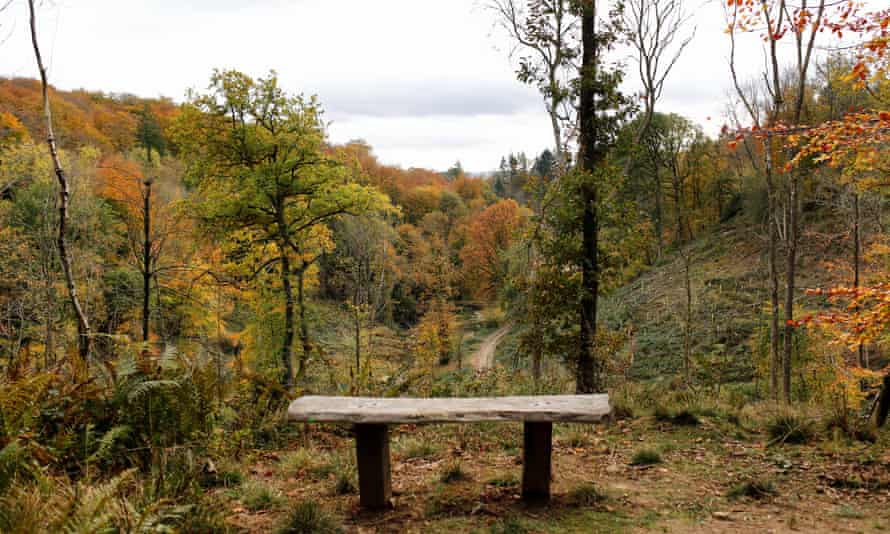
They come for the quality food and drink: chef-patron Andy Link was raised on a Herefordshire farm and has maintained strong connections to the area’s producers, ensuring as many of his ingredients – from rapeseed oil to rare-breed beef – are as local as possible. And they come for the walks – just ask, and a walking booklet can be borrowed from behind the bar.
Which is exactly how I come to be setting off from the pub on a bright autumn morning, booklet in hand, homemade fudge in my pocket, ready for a day on the trails.
Actually, I am also fudging my walk, combining a few different paths to try to hit all the interesting-looking bits. This takes me first across dew-sparkled grass and into Pokehouse Wood.

“Poke” derives from puck, the mischievous sprites alleged to haunt these trees and lead travellers awry – a threat deemed so serious in these parts that a local man once put up a stipend to pay for the church bells to be rung for an hour at sunset each day to guide any lost souls to safety.
Ultimately though, mankind proved the bigger danger. With the Lugg gurgling away beyond the bracken and hazel, I find the remains of a quarry where, in 1903, labourer William Haywood murdered his wife, Jane, after she tried unsuccessfully to persuade him to come home from the pub; he was apprehended below Pokehouse Wood, heading towards Aymestrey, pushing Jane’s limp and battered body in a wheelbarrow. He was the last man to be hanged in Herefordshire.
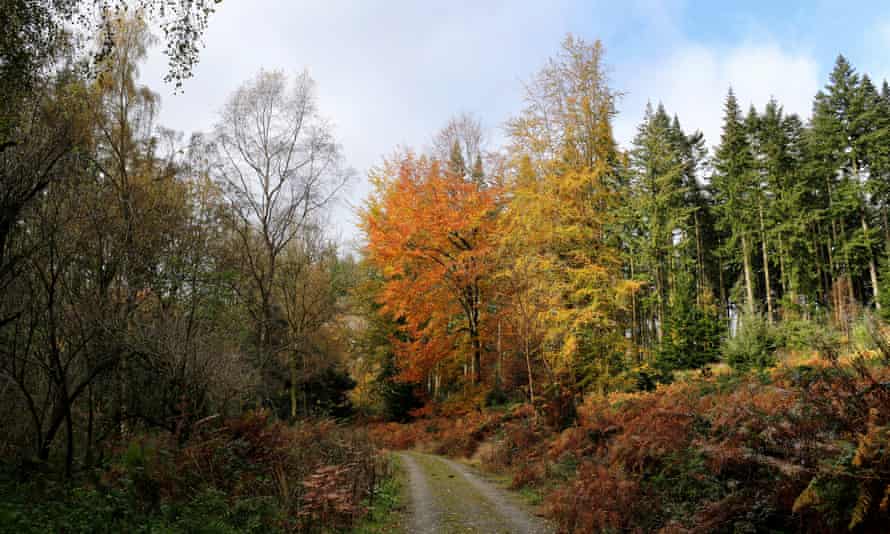
As I navigate Pokehouse and then School House Wood, I see no ghosts or fairies, only dog-walkers and a runner, enjoying the soft, wide trail with its views south across Herefordshire’s gentle rise and roll. It is a route that leads to Croft Castle, founded in the 11th century and now in the care of the National Trust. A phalanx of twisted sweet chestnuts lines the way down to the fortified manor and walled gardens; there’s a fee to enter the grounds but not to use the public rights of way. So I continue into Fishpool Dingle – how could you not, with a name like that?
This tight, secretive valley was once a hive of activity, dotted with quarries, lime kilns and a chain of ponds connected by slipways that were stocked with carp and trout for the castle’s kitchen. In the 19th century, it was redesigned to be officially “picturesque” – that popular Georgian fancy – with scattered follies and conscious landscaping. The result is a collage of tucked-away grottoes, industrial leftovers, squirrel-scampered beech and enormous Douglas firs reaching up to 40 metres. Captain James Croft (1907-1941), 11th Baronet of Croft Castle, had the right idea: he’s buried at the head of the valley, well placed to enjoy the view for eternity.
It is by his mossy grave that I veer north, for an even loftier lookout. At the top of the rise, looming ahead at around 300 metres, is Croft Ambrey, an iron age hillfort that was occupied from the sixth century BC until Roman times. I trace the outer northern edge and find the perfect picnic bench, exposed to the wind but gazing past soaring Scots pines, to the Black Mountains of Wales, shadow-marked even under blue skies.
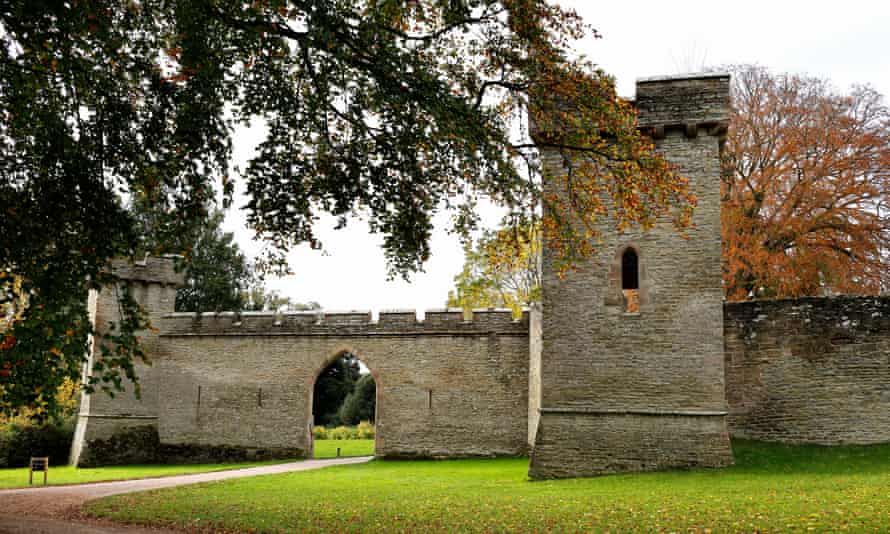
I hop over a stile into the hill fort’s inner sanctum, its ramparts still visible and a few lumps and bumps suggesting the village once contained within – archaeological excavations have unearthed evidence of granaries and sheep pens. The panorama from the highest point is superb; the buzzard circling and mewing above seems to agree.
From here I fall in step with the Mortimers, picking up part of the eponymous trail to descend through woods stippled with blackberries and bracken on the turn to gold. Invisible birds sing and the neat-ranked, straight-backed trees of the plantation applaud them in the wind. Eventually I return to the closer confines of Pokehouse Wood – nearly home – when I see a flash of something in the thicket’s darkest innards. A startled deer’s retreating rump, perhaps? Or a puck up to his tricks, trying to lead me astray, to keep me away from the pub’s warm bar, fillet steak and glass of fruity malbec. He will have to try harder than that.
The pub
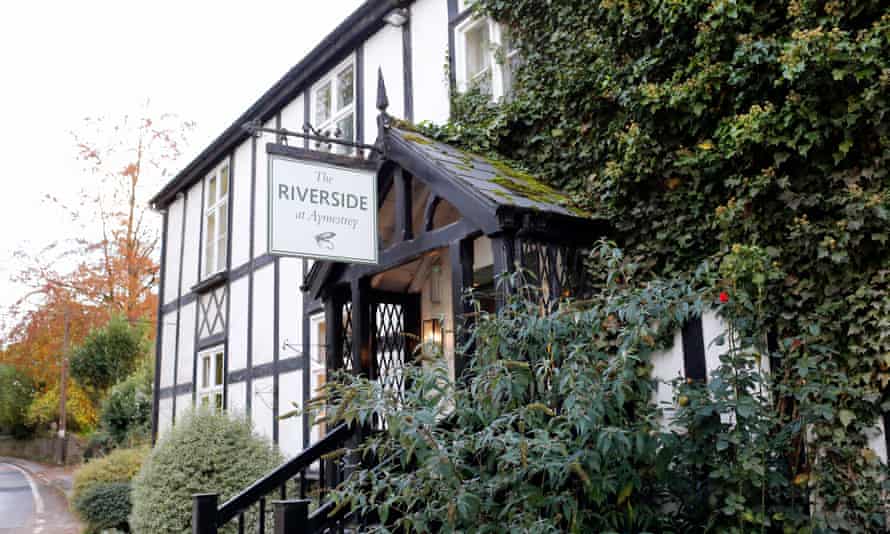
Not so long ago, the Riverside was called the Crown and was a drinkers’ pub, popular with local farmers. These days, it’s famed for its food, which is sustainably sourced and as local as possible. Link and manager George Parkes spent lockdown expanding the kitchen garden and adding a pigsty, so more produce can be grown on site. Braised beef is Link’s speciality; also expect truffle chips, creative veg and homemade breads and ice-creams. A woodburner keeps the informal, oak-floored dining rooms cosy in winter; tables among the terraced flowerbeds make a lovely summer spot.
The rooms
There was no bridge over the Lugg in 1600, so sheep drovers and other wayfarers would stop overnight before fording the river. There are still four guest rooms in the old, timber-framed part of the inn. There are two suites in a stone annex plus – most fun – three newer garden rooms, up towards the veg patch. With their mind-your-head doorways and conical roofs, these feel like hobbit houses, though are spacious inside. Mine – Beechenbank – has a freestanding bath, a plush king size bed and an exceptionally cosy feel.
Doubles from £90 B&B, riversideaymestrey.co.uk
 Top Naija News: Nigerian News, Breaking News Nigeria and World News Top Naija News is a daily news publication in Nigeria, delivering the latest breaking news in Nigeria and around the world.
Top Naija News: Nigerian News, Breaking News Nigeria and World News Top Naija News is a daily news publication in Nigeria, delivering the latest breaking news in Nigeria and around the world.
